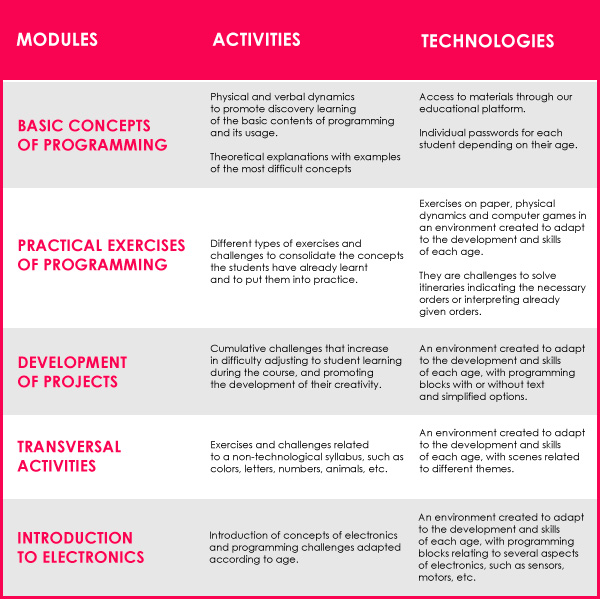Project Description
KIDS: COMPUTATIONAL THINKING FOR CHILDREN IN THE EARLY GRADES OF PRIMARY SCHOOL
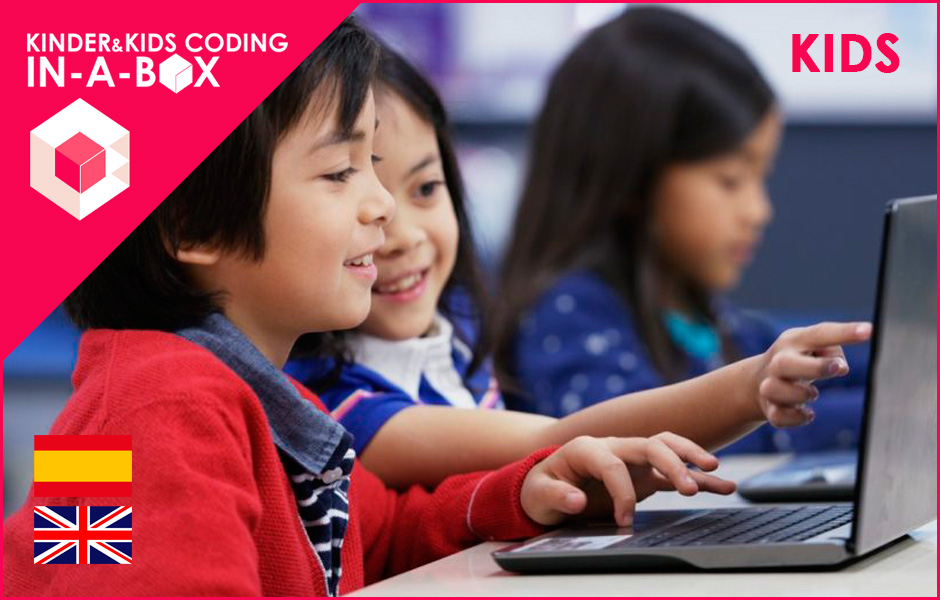
SCHOOL STAGE: 1st/2nd of Primary (Spanish Educational Model)
RECOMMENDED AGE:
KIDS I – 6 years
KIDS II – 7 years
AVAILABLE LANGUAGES:
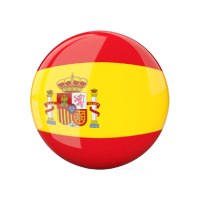

DURATION: 2 school years
TECHNOLOGIES:
Kinderduino, Juniorduino
![]() TECHNOLOGICAL YOUTH PASSPORT ACCREDITATION:
TECHNOLOGICAL YOUTH PASSPORT ACCREDITATION:
The content of this course covers the following competences of the TYP FOR KINDER & KIDS:
KIDS BASIC
- Angles and degrees
- While
- Procedures
- Nesting
- Conditional II
- X and Y
KIDS ADVANCED
- Clicking on an object
- Say / Think
- Dialogues
- Change costume
- Size
- Sensors
- X and Y II
- Go to coordinates
DESCRIPTION
Children in Early Primary School start reading but still have not mastered it. Also, they begin to be able to handle abstract ideas, but learning cannot rely on such tools.
OBJECTIVES:
In both courses of KIDS, children will approach the concepts through classroom games and dynamics, but they will be shorter than in the case of Preschool children.
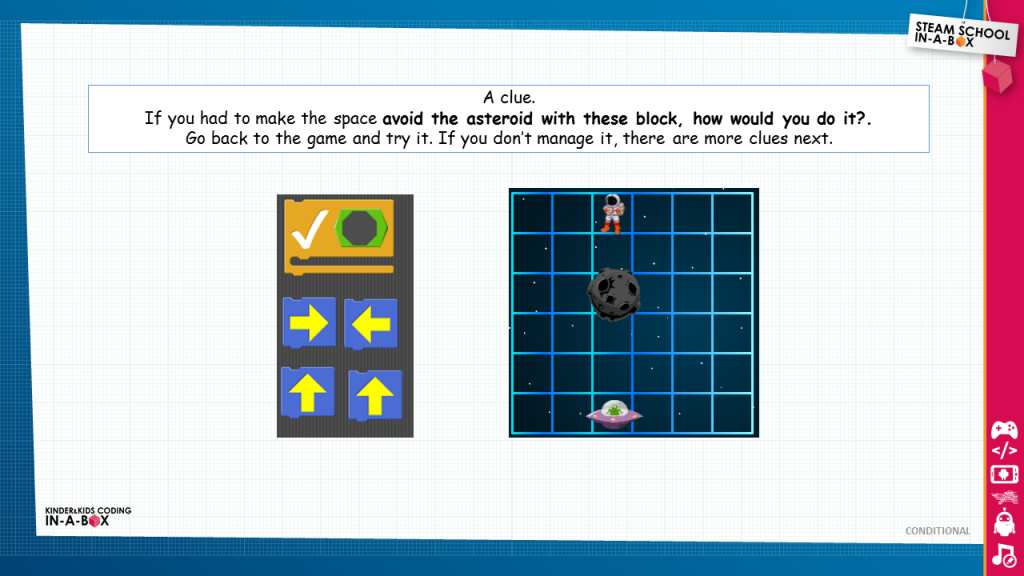
LEARNING THROUGH GAMES AND CLASSROOM DYNAMICS
KINDER & KIDS CODING IN-A-BOX combines classroom dynamics and inmediate exercises with simple programming scenarios of videogames to practise the already learnt concepts.
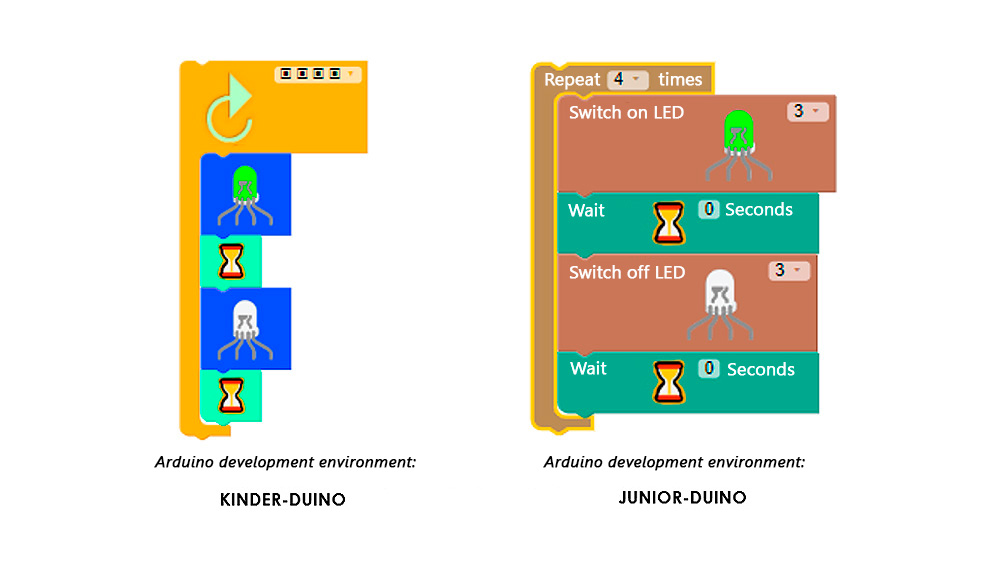
ARDUINO PROGRAMMING: FROM KINDER-DUINO TO JUNIOR-DUINO
By programming the Arduino board and integrated electronic components, children will combine the KINDER-DUINO programming environment, based only on symbols, with JUNIOR-DUINO, which seeks to combine the symbols with text and numbers.
TECHNOLOGICAL YOUTH PASSPORT AND RECOGNITION OF KNOWLEDGES ACQUIRED BY CHILDREN
With KINDER & KIDS children of Preschool and Early Primary School acquire real Programming skills as loops, conditionals, procedures and others.
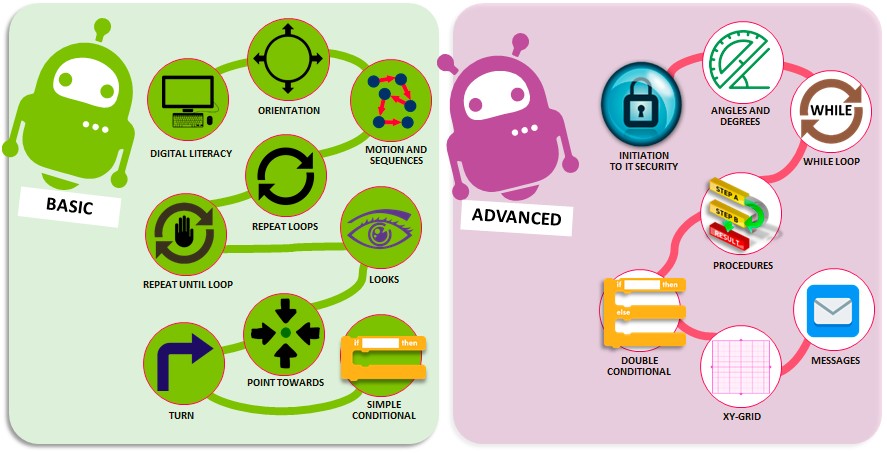
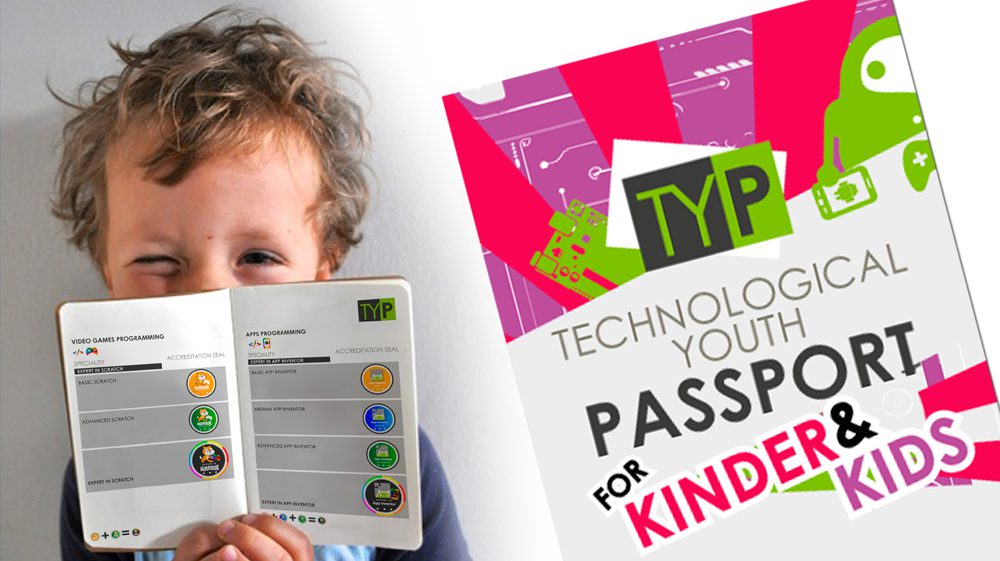
So, how can families monitor the children’s progress? Is there any way that students get due recognition for these advances?
KINDER & KIDS is the first and only method that offers a programme of recognition of the skills that younger children acquire by stamping a specific TECHNOLOGICAL YOUTH PASSPORT, the TYP FOR KINDER & KIDS.
ACCREDITATIONS
| LEVELS | TYP ACCREDITATION |
|---|---|
| KINDER BASIC | Movement (*). Sequence (*). Repeat N times. Until. Turn. Point to. Conditional. |
| KINDER ADVANCED | Bouncing if touch an edge. Forever. Show / Hide. Wait. Wait until. Play a sound. Go to an object. |
| KIDS BASIC | Angles and degrees. While. Procedures. Nesting. Conditional II. X and Y. |
| KIDS ADVANCED | Clicking on an object. Say / think. Dialogues. Change costume. Size. Sensors. X and Y II. Go to coordinates. |
ACCREDITATIONS
(*) Marked with asterisk: objectives covered with 3 years (PREKINDER).
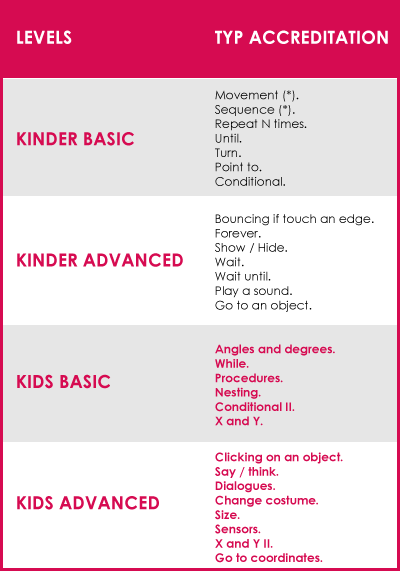
CONTENTS AND ACTIVITIES
| MODULES | ACTIVITIES | TECHNOLOGIES |
|---|---|---|
| BASIC CONCEPTS OF PROGRAMMING | Physical and verbal dynamics to promote discovery learning of the basic contents of programming and its usage. Theoretical explanations with examples of the most difficult concepts. |
Access to materials through our educational platform. Individual passwords for each student depending on their age. |
| PRACTICAL EXERCISES OF PROGRAMMING | Different types of exercises and challenges to consolidate the concepts the students have already learnt and to put them into practice. | Exercises on paper, physical dynamics and computer games in an environment created to adapt to the development and skills of each age. They are challenges to solve itineraries indicating the necessary orders or interpreting already given orders. |
| DEVELOPMENT OF PROJECTS | Cumulative challenges that increase in difficulty adjusting to student learning during the course, and promoting the development of their creativity. | An environment created to adapt to the development and skills of each age, with programming blocks with or without text and simplified options. |
| TRANSVERSAL ACTIVITIES | Exercises and challenges related to a non-technological syllabus, such as colors, letters, numbers, animals, etc. | An environment created to adapt to the development and skills of each age, with scenes related to different themes. |
| INTRODUCTION TO ELECTRONICS | Introduction of concepts of electronics and programming challenges adapted according to age. | An environment created to adapt to the development and skills of each age, with programming blocks relating to several aspects of electronics, such as sensors, motors, etc. |


